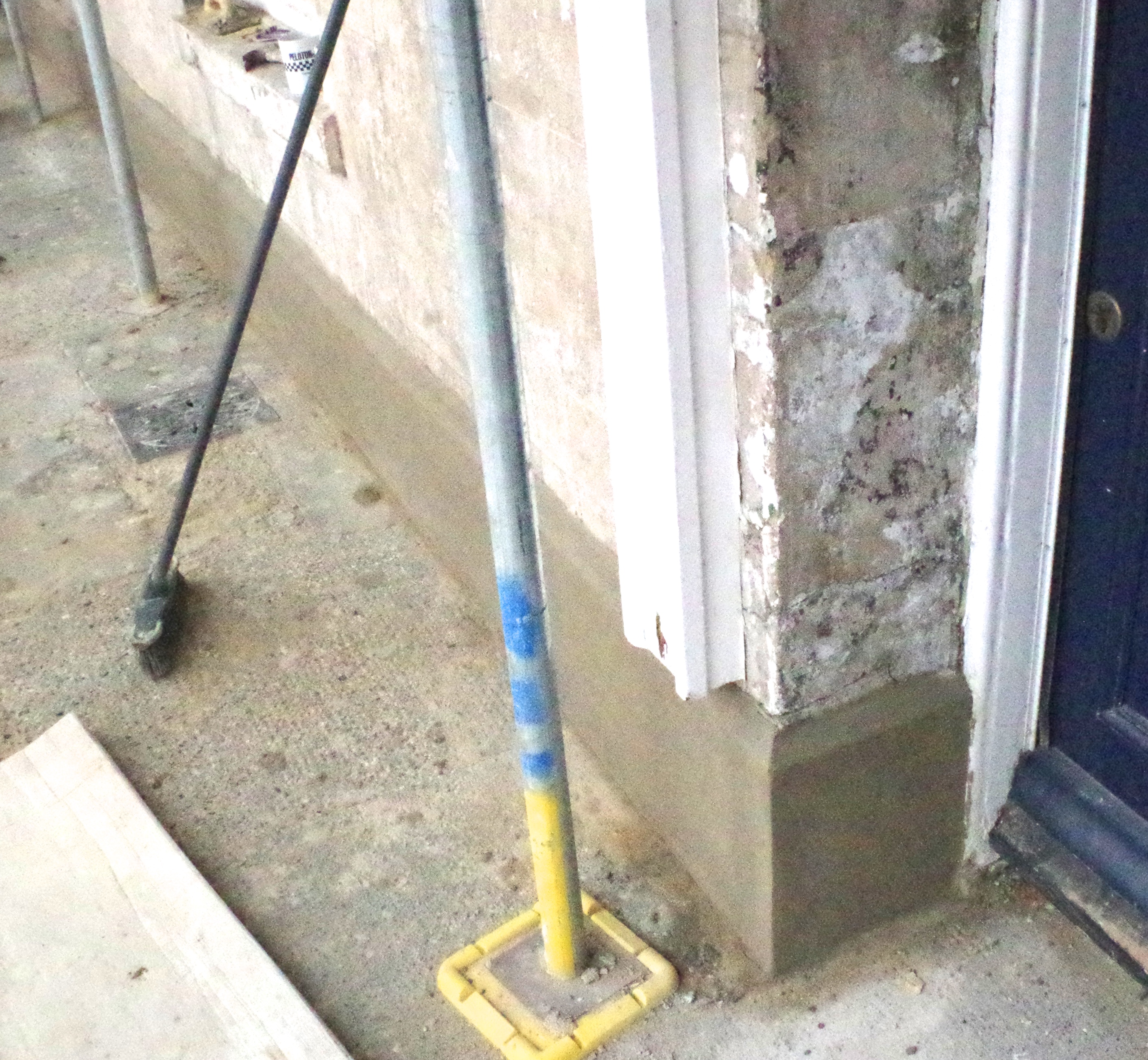Here is an example of un-damp proofing !
The base of this listed buildings walls were damp, and this was after various attempts to ‘damp proof’ them !
Before the cement plinth was removed, we took a series of masonry samples from deep with in the wall, they were damp with moisture contents high enough to warrant action. The earlier stucco render had been removed ( in breach of listed building consent ) and a cement plinth was applied to ‘ water-proof’ the base of the wall, this had the opposite effect and was trapping moisture. So the cement plinth was stripped to allow the masonry to dry out.
Once the plinth was stripped, we could see that the bricks had been drilled for the application of a so called ‘injected damp proof course’, this was obviously not working !
Once the base of the walls were dry, we then applied a new plinth but this time breathable materials were used; Natural Hydraulic Lime (NHL) as a base with Roman Cement as a finish coat. This was done as it would have been in the 1800’s.
The moral of this tale is – don’t use impermeable materials on breathable walls because they cause dampness and it is a breach of listed building consent to boot.

New breathable Roman Cement / lime mortar plinth
